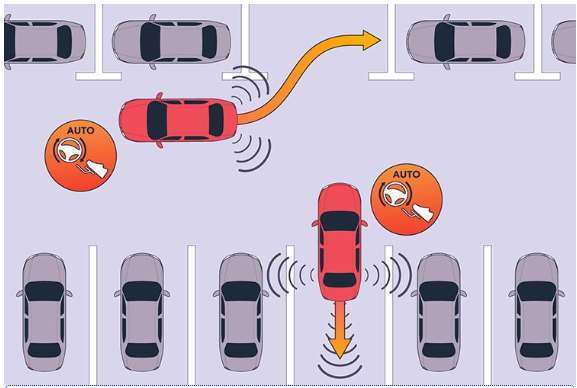Autonomous Parking: Collision Control for Large Off-Highway Vehicles
Written by Meet Rajeshbhai Dedakiya 03 Aug, 2023
In the last few decades, dependency on public and private vehicles for transportation has soared with the vast variety and range produced by the automobile industry. Maintenance of these vehicles is important to ensure their availability and includes safe driving without incident. Parking poses a problem because the chances of collision are high due to poor visibility and judgment, especially in crowded places. The problem is worse for bulky off-highway vehicles because their size and additional cabin equipment prevent the driver from seeing the parking area clearly. As a result, collisions can occur, damaging both the vehicle and surrounding property.
The Autonomous Parking Assistance System is a system/technology which helps drivers park in congested, dark areas/garages safely and accurately using multiple camera, ultrasonic, and other sensors.
Data-driven, safer parking
A parking assistance system helps drivers to analyze and accurately assess the parking space and park their vehicle without collision. The system uses multiple sensors to get an overview of the surroundings. Camera, ultrasonic and other sensors are deployed onto the car to get data and a 360-degree view is displayed on the dashboard. This helps the driver to visualize and assess the space available as well as any obstacles present, flagged by a sound alert.
As soon as the vehicle parking assistance system is turned on, the vehicle sensor will automatically find a suitable parking space for the vehicle. As soon as the vehicle finds this space, the driver can leave the steering, while retaining control on the accelerator and brake, as the vehicle moves into the parking space. Using ultrasonic and camera sensor inputs, the steering will park the vehicle in the parking spot with zero damage.

Types of Parking Assistance System
As shown in the diagram above, there are two types of parking: parallel and perpendicular parking. Based on the space where the parking spot is available, either parallel or perpendicular parking is activated, assistance to the driver is given, and based on this, parking is done using the different sensors shown in the diagram. Each of the two parking types use different types of sensor for parking. In parallel parking, the back/rear and side sensors will be activated, whereas in perpendicular parking, based on the position of the vehicle, specific other sensors will be activated.
According to research and reports, 81% of the drivers who are using the assistance system park their vehicle at the perfect location when compared to drivers parking their vehicle without any assistance. Also, using this system, parking speed increases on average by 10% of the total time taken, according to test reports.
Autonomous parking technology uses artificial intelligence and machine learning algorithms. The model is trained on huge datasets of different types of environments and parking, and is then deployed into the vehicle. Sensors outputs are given to the model, and it gives instruction to steering; in a fully autonomous parking system, it also gives instruction/signals to the accelerator and brakes, and based on these signals the vehicle moves to park itself into the chosen parking space.
Case study: Off Road Heavy Vehicle Parking Scenario
Off-road vehicles such as wheel loaders, rigid dump trucks, mining trucks, scrappers, and load haul dumpers are large-sized vehicles. Driver cabins in these vehicles are quite small and compact and loaded with many pieces of equipment which help the driver to operate the vehicle. It is difficult for the driver to see what is ahead of or behind the vehicle. While parking, it becomes difficult to judge the space and park accurately without an accident. For example, a large wheel loader has buckets attached at the ends of the vehicle, and while driving, the driver has no idea what is present right in front of or behind the buckets, and there is high chance of collision. To avoid collisions, multiple sensors placed in different positions on the vehicle help the driver see surrounding objects. A parking assistance system becomes a great advantage for the driver in this case, as he can rely on system information and park the vehicle without an accident.
About the Author
Meet Rajeshbhai Dedakiya is a Data Scientist and has pursued Masters in Data Science from Bits Pilani. He has over 5 years of automotive industry experience with an interest in building new end-to-end solutions, that accelerate human well-being and developing different models for environmental protection.
.png?width=774&height=812&name=Master%20final%201%20(1).png)